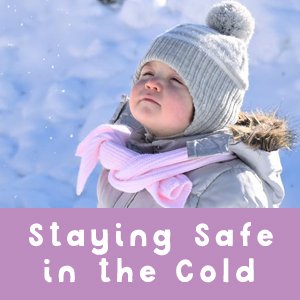Staying Safe in the Cold – Hypothermia and Frostbite
 It’s definitely a blistery day in Oakville today with flash freezing and snow! Whenever heading out this winter it is always extremely important to dress appropriately and assess how long you should spend outside. We at Kinder Buddies would like to go over the two biggest risks when being out in the cold: Hypothermia and Frostbite.
It’s definitely a blistery day in Oakville today with flash freezing and snow! Whenever heading out this winter it is always extremely important to dress appropriately and assess how long you should spend outside. We at Kinder Buddies would like to go over the two biggest risks when being out in the cold: Hypothermia and Frostbite.
Hypothermia
Hypothermia occurs when the body loses heat faster than in can produce. While first signs of Hypothermia are mild at it’s third stage Hypothermia is life threatening needing access to emergency services.
Signs of Hypothermia
Hypothermia starts with mild symptoms such as shivering but can quickly progress to the third stage that includes loss of consciousness.
- Shivering (Mild)
- Can walk and talk but cannot do complex motor functions (Mild)
- Slurred speech (Moderate)
- Violent shivering (Moderate)
- Loss of fine motor coordination (Moderate)
- Mental Confusion (Moderate)
- Shivering eventually stops (Severe)
- Loss of consciousness (Severe)
- Shallow breathing (Severe)
Treatment of Hypothermia
As soon as mild shivering sets in it is important to head inside or add more layers to avoid moderate and severe symptoms. If moderate or severe symptoms being it is important to immediately contact emergency services (9-1-1). While waiting for emergency services move the person to a warmer location and slowly warm them up with more layers.
Avoiding Hypothermia
Make sure you and your family are all appropriately dressed for the weather. Wear multiple layers and use accessories such as mittens and hats to help keep body heat in. Avoid wearing cotton as cotton when wet will wick away heat from the body, instead wear wool or specific thermal clothing.
As soon as you or someone else starts to shiver consider moving inside or putting on more layers so it is appropriate for the weather. Always check the weather forecast before heading out, watch for cold weather warnings and stay in during warnings.
Frost Bite
Frost Bite occurs with lack of blood flow to extremities due to the cold and lack of proper protection to extremities. Depending on the temperature frost bite can occur in minutes so it is important to always dress appropriately for the weather.
Signs of Frost Bite
- Redness of the extremities (ears, nose, hands, feet)
- Skin becomes hard/waxy
- Numbness in extremities
- Skin changes to black (Extreme Frost Bite – Emergency)
Treating Frost Bite
When extremities go numb it is hard to asses how much the frost bite has progressed, it is important to deals with frost bite as soon as it occurs. Begin by applying warm water, not hot water, to slowly warm the area that is numb. Apply layers to slowly warm up the area. Do not rub/pick at/message injured skin. If your feet are frost bitten avoid walking. Seek medical help if skin turns black, skin feels waxy or unusually numb.
Avoiding Frost Bite
Make sure to check weather advisories and temperatures before heading out for the day. Make sure to dress appropriately with hats, mittens, wool socks, proper water proof boots. Even if you are going for a short ride in the car make sure these items are available in case your car breaks down. Drink warm liquids but avoid alcohol and caffeine as they can restrict blood flow.
Stay warm and safe friends and families!
Kinder Buddies is a Quality First Daycare and Child Care facility in Oakville, Ontario. We take care of children from the age of 6 weeks to 5 1/2 providing nutritious meals and fun activities all day long.

 Previous Post
Previous Post Next Post
Next Post